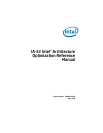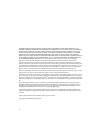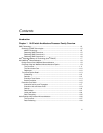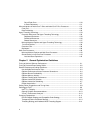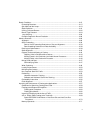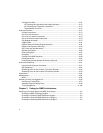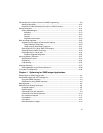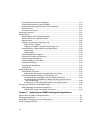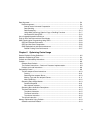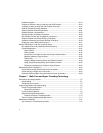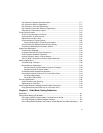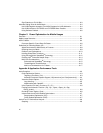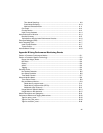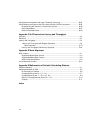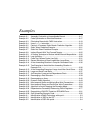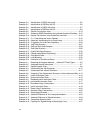ii
INFORMATION IN THIS DOCUMENT IS PROVIDED IN CONNECTION WITH INTEL PRODUCTS. NO
LICENSE, EXPRESS OR IMPLIED, BY ESTOPPEL OR OTHERWISE, TO ANY INTELLECTUAL PROPERTY
RIGHTS IS GRANTED BY THIS DOCUMENT. EXCEPT AS PROVIDED IN INTEL’S TERMS AND CONDI-
TIONS OF SALE FOR SUCH PRODUCTS, INTEL ASSUMES NO LIABILITY WHATSOEVER, AND INTEL
DISCLAIMS ANY EXPRESS OR IMPLIED WARRANTY, RELATING TO SALE AND/OR USE OF INTEL
PRODUCTS INCLUDING LIABILITY OR WARRANTIES RELATING TO FITNESS FOR A PARTICULAR PUR-
POSE, MERCHANTABILITY, OR INFRINGEMENT OF ANY PATENT, COPYRIGHT OR OTHER INTELLEC-
TUAL PROPERTY RIGHT. Intel products are not intended for use in medical, life saving, or life sustaining
applications. Intel may make changes to specifications and product descriptions at any time, without notice.
This IA-32 Intel
®
Architecture Optimization Reference Manual as well as the software described in it is furnished
under license and may only be used or copied in accordance with the terms of the license. The information in this man-
ual is furnished for informational use only, is subject to change without notice, and should not be construed as a com-
mitment by Intel Corporation. Intel Corporation assumes no responsibility or liability for any errors or inaccuracies
that may appear in this document or any software that may be provided in association with this document.
Except as permitted by such license, no part of this document may be reproduced, stored in a retrieval system, or trans-
mitted in any form or by any means without the express written consent of Intel Corporation.
Developers must not rely on the absence or characteristics of any features or instructions marked “reserved” or “unde-
fined.” Improper use of reserved or undefined features or instructions may cause unpredictable behavior or failure in
developer's software code when running on an Intel
®
processor. Intel reserves these features or instructions for future
definition and shall have no responsibility whatsoever for conflicts or incompatibilities arising from their unauthorized
use.
Hyper-Threading Technology requires a computer system with an Intel
®
Pentium
®
4 processor supporting Hyper-
Threading Technology and an HT Technology enabled chipset, BIOS and operating system. Performance will vary
depending on the specific hardware and software you use. See http://www.intel.com/info/hyperthreading for more
information including details on which processors support HT Technology.
Intel, Pentium, Intel Xeon, Intel NetBurst, Intel Core Solo, Intel Core Duo, Intel Pentium D, Itanium, MMX, and
VTune are trademarks or registered trademarks of Intel Corporation or its subsidiaries in the United States and other
countries.
*Other names and brands may be claimed as the property of others.
Copyright © 1999-2006 Intel Corporation.



